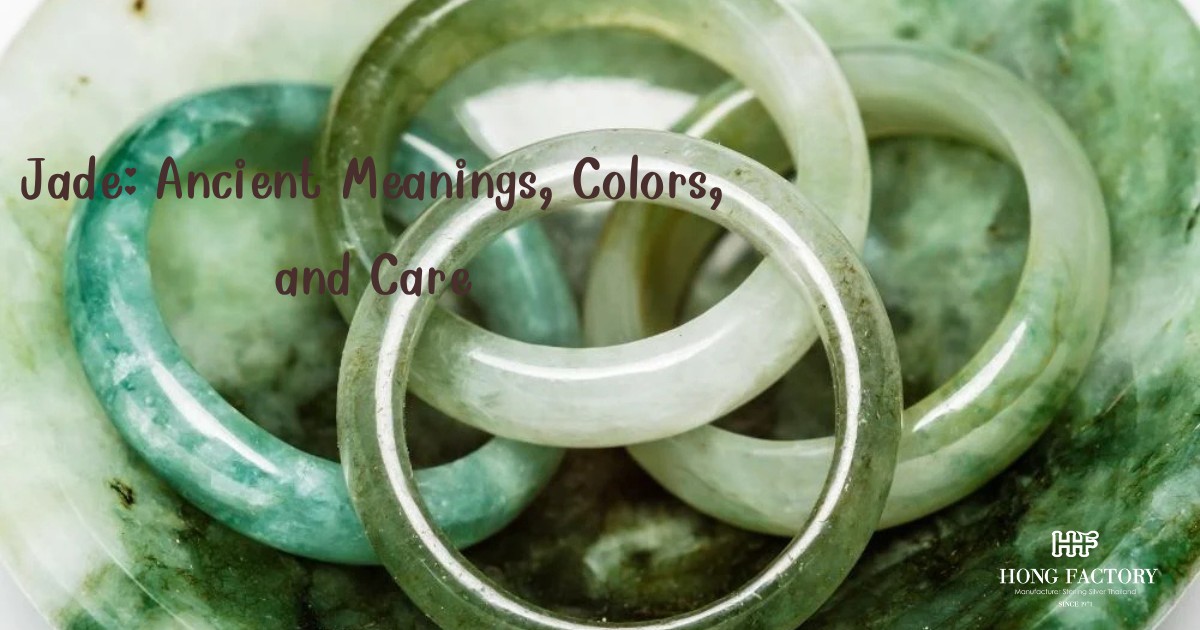
Jade: Ancient Meanings, Colors, and Care
- by admin
Jade has been revered for thousands of years for its beauty, spiritual significance, and cultural importance. Known for its smooth texture and vibrant green hues, jade is more than a decorative gemstone—it is a symbol of purity, protection, harmony, and balance. Jade: Ancient
Highly valued in cultures throughout Asia, Mesoamerica, and beyond, jade remains a deeply respected and energetically rich stone. Jade: Ancient
This guide explores the different types and colors of jade, its historical and spiritual meanings, as well as practical tips for care and use. Whether used as jewelry, talismans, or in ceremonial settings, jade continues to inspire reverence and admiration across generations.
Jade: Ancient Meanings, Colors, and Care
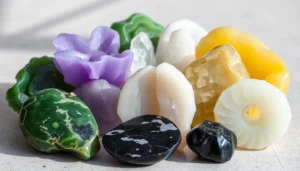
What Is Jade?
The term “jade” actually refers to two distinct but similar minerals:
- Jadeite: The rarer and more valuable variety. Jadeite exhibits a wider range of colors and greater translucency. Imperial jade, a vibrant emerald-green jadeite colored by chromium, is the most prized.
- Nephrite: More common and widely used in traditional tools and carvings. Nephrite has a fibrous texture, tends to be more durable, and is found in various shades of green, white, and brown.
Although chemically and structurally different, both jadeite and nephrite are considered true jade and have been equally valued in different cultures and time periods.
Physical Properties of Jade
- Jadeite Hardness: 6.5 to 7 on the Mohs scale
- Nephrite Hardness: 6 to 6.5
- Luster: Vitreous to waxy
- Transparency: Opaque to translucent
- Crystal System: Monoclinic (jadeite), monoclinic or fibrous (nephrite)
Jade is renowned for its toughness and resistance to breakage, especially nephrite, which was historically used to make weapons, tools, and ritual items. It can be polished to a brilliant sheen, making it ideal for fine carving and jewelry.
In gemology, jade’s value is assessed based on color, texture, translucency, and craftsmanship. The most highly prized jade—Imperial jade—has a vivid, even green color, high translucency, and a smooth, glassy texture.
Cultural and Historical Significance
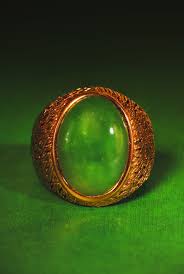
China
No culture has embraced jade as fully as China. For over 7,000 years, jade has been regarded as the “Stone of Heaven.” Confucius associated jade with the virtues of wisdom, compassion, and righteousness. It was used in burial suits for royalty, shaped into dragons, phoenixes, and guardian animals, and believed to connect the earthly and spiritual realms.
A famous Chinese proverb says: “Gold has a price; jade is priceless.”
Emperors and nobles believed jade had the power to grant immortality and used it in elixirs and ceremonial items. Chinese scholars often wore jade pendants as symbols of moral integrity and refinement.
Mesoamerica
In ancient Mesoamerican civilizations, such as the Maya and the Aztecs, jade was even more precious than gold. It symbolized fertility, life force, and divine connection. Jade masks, beads, and amulets were placed in tombs to accompany the dead and ensure protection in the afterlife.
These cultures associated jade with water, crops, and regeneration. The green color was linked to maize—the sacred plant of life—and to the cycle of birth and rebirth.
Maori Culture
Among the Maori people of New Zealand, nephrite jade (called pounamu or greenstone) is considered a sacred treasure (taonga). Carved into symbolic shapes like the hei-tiki or spiral, it is passed down through generations and imbued with ancestral mana (spiritual power). It serves as a mark of identity, honor, and spiritual connection.
Other Cultures
- India: Jade is considered auspicious and is used in talismans and ceremonial tools.
- Russia and Central Asia: Nephrite was widely used in Siberia for both functional and decorative objects.
- Europe: Jade became popular during the Art Deco era, often incorporated into fine jewelry.
Metaphysical and Spiritual Meanings
1. Harmony and Balance
Jade harmonizes energy, balancing emotional, physical, and spiritual aspects of life. It calms the nervous system and stabilizes mood swings. It is often used in crystal healing to align the mind and body.
2. Protection and Luck
Jade is widely believed to offer protection against misfortune and accidents. In traditional Chinese medicine and metaphysics, jade is used as a guardian stone, worn by travelers, infants, and the elderly to ensure safety and good fortune. It is also said to absorb negative energy and transmute it into positive vibrations.
3. Heart Chakra Activation
Green jade resonates strongly with the heart chakra (Anahata):
- Opens the heart to love and compassion
- Aids in forgiveness and emotional healing
- Encourages trust, empathy, and healthy relationships
It’s a perfect stone for those healing from grief, betrayal, or emotional trauma.
4. Wisdom and Tranquility
Jade’s energy supports mental clarity, patience, and thoughtful decision-making. It is considered a stone of serenity, helping users access deeper spiritual insights and remain centered in difficult situations It is a favored stone for scholars and spiritual seekers who strive for enlightenment and inner peace.
5. Prosperity and Longevity
Jade is often used in manifestation practices to attract wealth, good luck, and success. It is believed to:
- Open the path to abundance
- Enhance self-sufficiency and perseverance
- Encourage long life and vitality
Feng Shui practices often recommend placing jade in the wealth corner of a room to attract financial growth and stability. Jade: Ancient
Jade Colors and Their Meanings
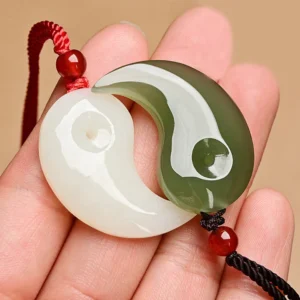
- Green Jade: Growth, health, prosperity, and fertility
- White Jade: Purity, peace, and spiritual clarity
- Lavender Jade: Emotional healing, spiritual awakening, and inner peace
- Black Jade: Protection, grounding, and strength during adversity
- Yellow/Orange Jade: Joy, optimism, and personal empowerment
- Red Jade: Vitality, courage, and life force
Each color aligns with different chakras and energetic intentions. For example, lavender jade works well with the crown chakra, while red jade stimulates the root chakra.
How to Use Jade
1. Jewelry
- Wear jade pendants, bangles, rings, or earrings for ongoing energy support.
- Jade worn on the left hand is believed to receive blessings; on the right, it projects energy outward.
2. Meditation and Energy Work
- Hold jade during meditation for calming and centering the mind.
- Place it over the heart or third eye for chakra healing and intuitive development.
3. Feng Shui and Space Clearing
- Place jade figurines, bowls, or spheres in the home or office to attract harmony and wealth.
- Use in the southeast area (wealth sector) or east (health and family) in Feng Shui placement.
4. Gifting Jade
Jade makes a meaningful and powerful gift for birthdays, anniversaries, or rites of passage. In many cultures, it is given as a gesture of protection, love, and spiritual well-being.
It is also traditional in some Asian cultures to give jade bracelets to children to protect their health and guide their moral development.
Caring for Jade
Although jade is tough, proper care is essential to preserve its beauty and energy:
Cleaning
- Use lukewarm water, mild soap, and a soft cloth or brush.
- Avoid abrasive materials that can scratch the surface.
Avoid
- Harsh chemicals like bleach or acid-based cleaners
- Prolonged exposure to direct sunlight (which can dull the luster)
- Ultrasonic or steam cleaners, which may damage the stone internally
Storage
- Store jade separately from harder gemstones (e.g., diamonds, sapphires).
- Wrap in a soft cloth or place in a lined jewelry box to avoid scratches.
Energetic Cleansing
- Cleanse under the moonlight or bury in soil overnight for energetic reset.
- Use sound (e.g., Tibetan singing bowl), smudging (e.g., sage or palo santo), or selenite plates for gentle clearing.
Jade in Modern Design and Art
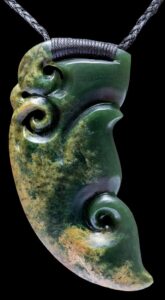
- Contemporary Jewelry: Designers continue to integrate jade into modern settings, blending tradition with fashion.
- Sculpture and Carving: Master artisans craft jade into intricate designs—dragons, flowers, Buddhas—used in homes, temples, and sacred spaces.
- Decorative Objects: Bowls, seals, statues, and ceremonial items are treasured for their spiritual presence and aesthetic value.
In modern design, jade is increasingly used in minimalist decor, paired with materials like wood, brass, and crystal for a refined and grounding effect.
Jade is more than a gemstone—it is a timeless symbol of harmony, healing, and the sacred connection between human and nature. Its enduring appeal across cultures is a testament to its powerful energy and natural beauty.
Whether worn as a protective charm, used in meditation, or cherished as a family heirloom, jade continues to serve as a spiritual ally and guardian of well-being. Honoring jade with intention allows its wisdom to flow into all areas of life—guiding us toward clarity, compassion, and conscious living.
Jade has been revered for thousands of years for its beauty, spiritual significance, and cultural importance. Known for its smooth texture and vibrant green hues, jade is more than a decorative gemstone—it is a symbol of purity, protection, harmony, and balance. Jade: Ancient Highly valued in cultures throughout Asia, Mesoamerica, and beyond, jade remains a…